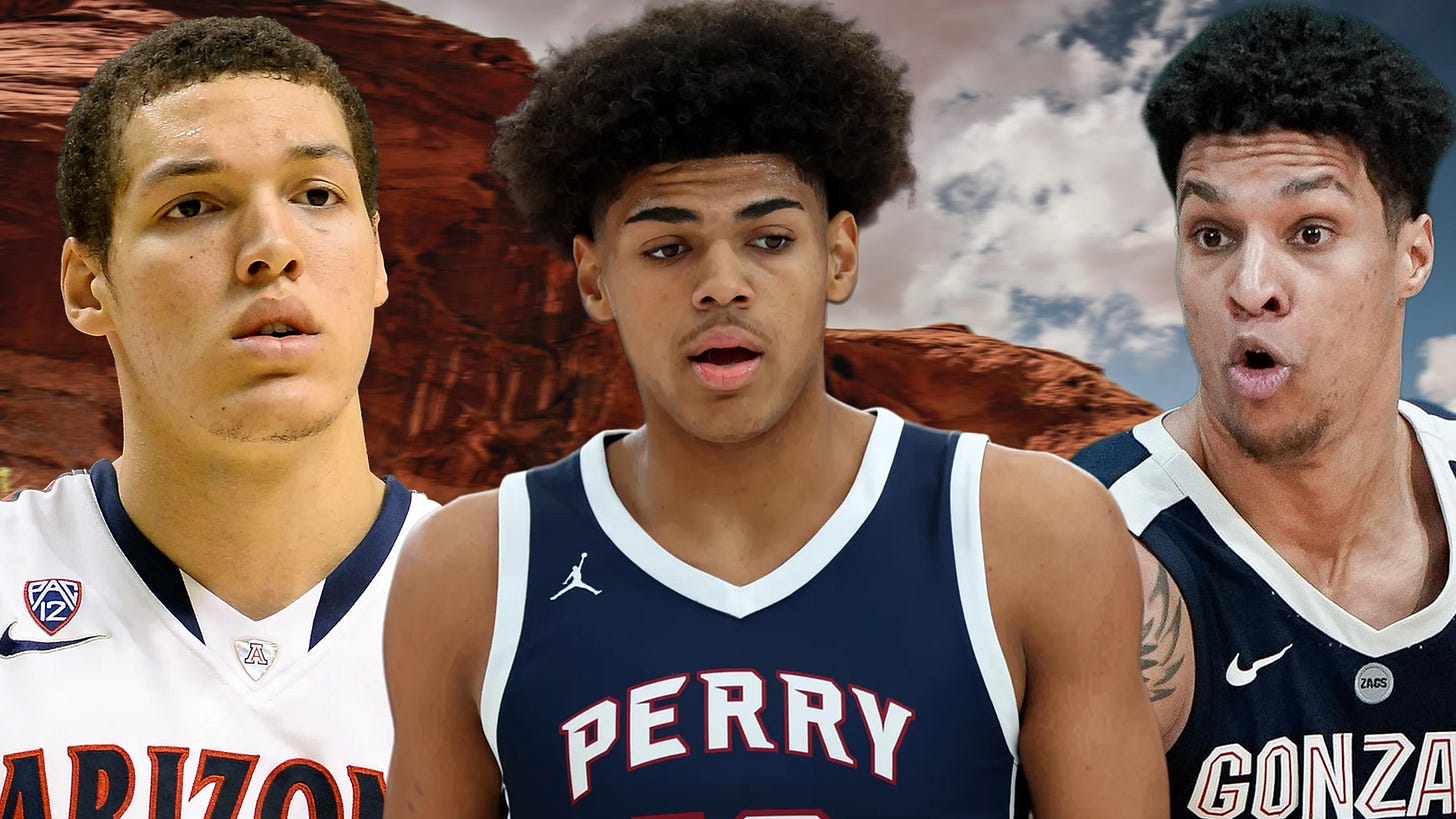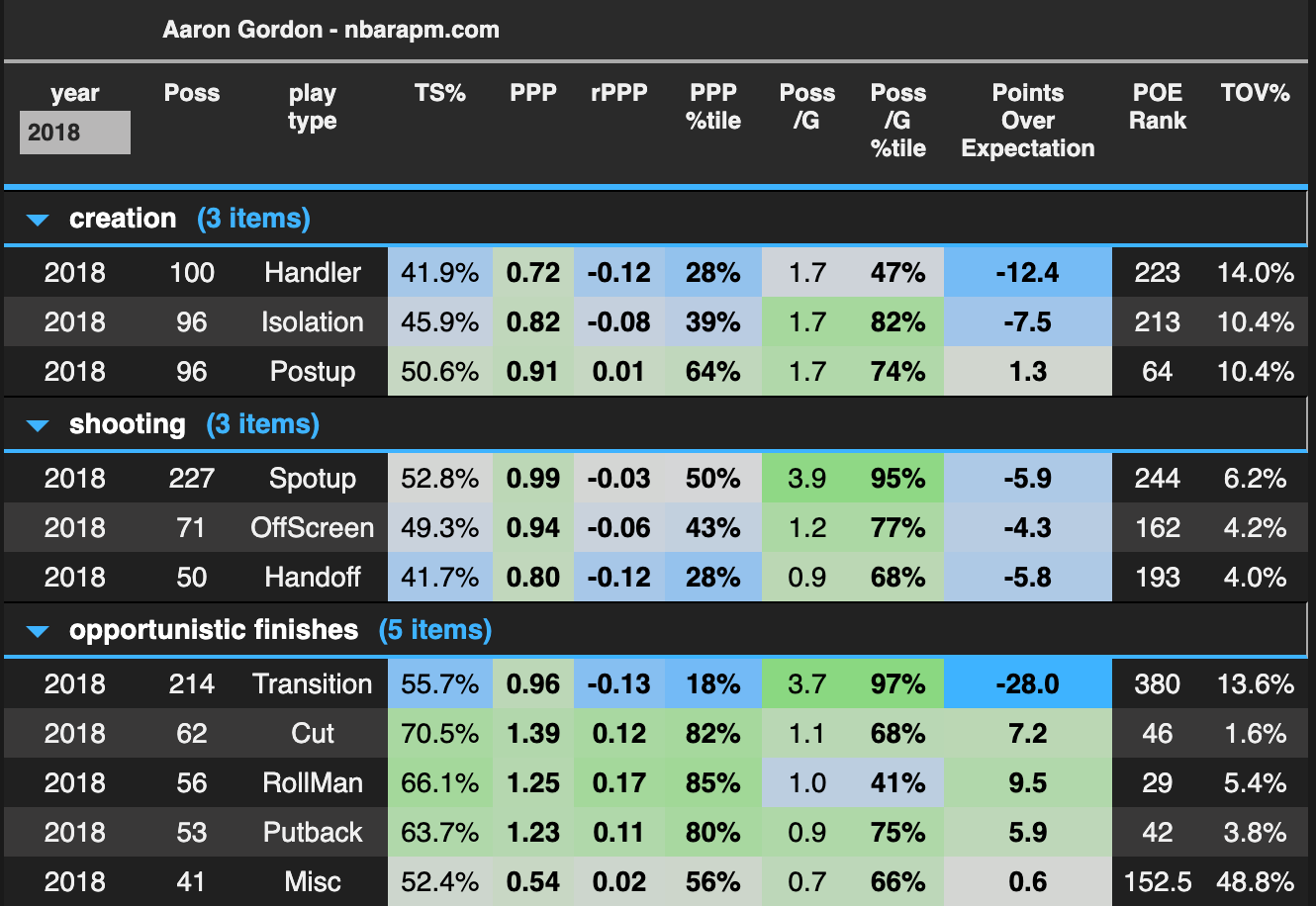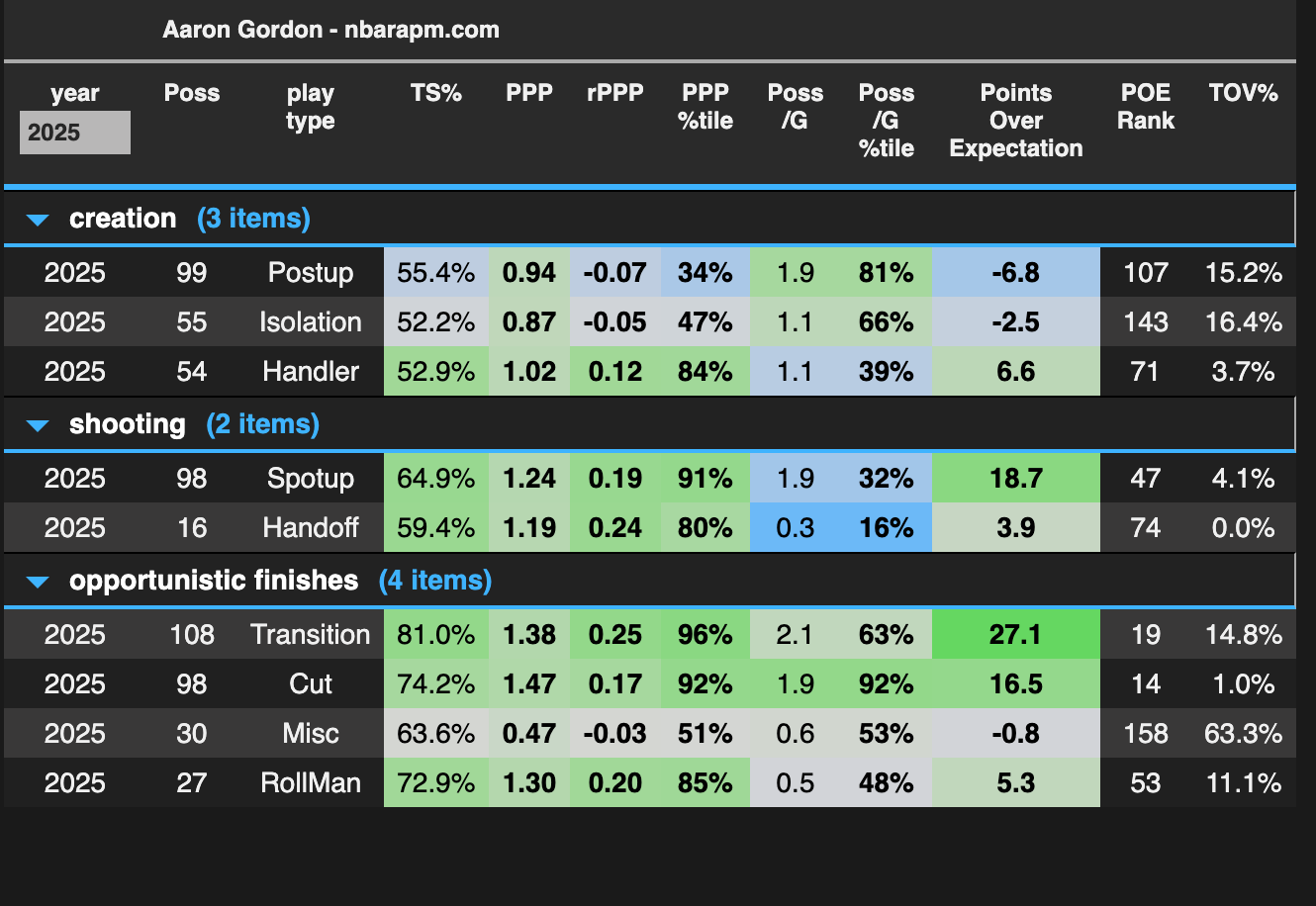Koa Peat is Bringing Bruising Back
Koa Peat, a consensus top ten player in the 2026 NBA Draft is slated to be Arizona's next NBA product, but how will his old-fashioned game translate to the next level?
He’s six-foot-eight.
235 pounds of muscle.
A top-10 recruit who jumps out of the gym and plays power forward for the University of Arizona.
You’re probably picturing Aaron Gordon.
But this isn’t a throwback piece.
This puzzle’s answer will play for the Wildcats over a decade later and try to leave a similar mark as Gordon did in his lone season in Tucson.
Incoming freshman Koa Peat starts his brief collegiate stint in November, but has already built an all-time legacy in Arizona as an amateur.
Outside of Cameron Boozer, Peat is the most decorated player in the 2026 NBA Draft. The Forward hung his Perry jersey with four state championships, three gold medals, two Gatorade player of the year trophies and a USA Basketball Male Player of the Year win.
Peat has been impactful in every setting he’s played in, and I think that will continue this season and in his NBA career.
Here’s why.
Brains AND Brawns
Peat’s appeal as a prospect stems from his ability to impact the game in multiple ways. According to Cerebro Sports, Peat averaged 23.7 points, 9.8 rebounds, and three assists per 40 over a 92-game sample.
He’s an old-school, interior-slanted scorer who lives at the rim and the free-throw line. Peat often uses his size and strength to power through smaller and weaker defenders on his way to the rim.
Peat does benefit from being bigger and stronger than almost all of his competition, but he’s not just a bruiser. He shows a fair amount of skill in his drives.
Peat is a tank and understands he can out-athlete most of his competition at this level. He supplements his brute strength with a good handle for his size, touch inside the arc, and an understanding of driving angles.
Peat also has a budding mid-range game that he’s been able to use as a counter when he can’t get to the rim.
When off the ball, the Arizona native adds value as a play finisher and glue-guy within a team’s offense. Peat will be a significant threat on the offensive glass (2.7 offensive rebounds per game) in the short roll and transition.
The forward understands where he needs to be on the floor to make an impact, and I think it translates when he’s facilitating or creating for others.
Peat grew into an adequate passer throughout high school, blossoming at 4.3 assists per game as a senior with a positive assist-to-turnover ratio. He’s a relatively quick and instinctual passer with a propensity to make reads on the move or from the post.
Peat’s feel for the game extends to the defensive end as well. He reminds me of an off-ball linebacker because he recognizes plays, covers ground, defends multiple positions, and cleans up his teammates’ mistakes (3.1 stocks per game). Peat doesn’t have the size or length (6-foot-11 wingspan) to anchor a defense full-time, but he is an excellent help defender and can guard threes and fours (and sometimes 5s).
The forward has good core strength and broad shoulders, which help with his balance and allow him to stifle drives on the perimeter.
Peat’s slashing, rebounding, connective passing and defensive event creation build his profile as a high-impact role player on the NBA level, but there are a few missing links in his game that make me question any potential star outcomes and lower his ceiling at the moment.
A lesson from a former Wildcat
When I first started diving into Peat’s game, I could not help but see shades of Aaron Gordon.
Not just because they’re about the same size, highly-touted recruits and going to Arizona, but because I think Peat can impact the game similarly—even tertiary aspects of their game, like passing, favor each other.
The comparison isn’t perfect. Gordon was more athletic at the same age, but Peat has a tighter handle and more touch.
But the more I watched Peat and thought about Gordon’s early career, the more I started seeing a cautionary tale.
Gordon didn’t flop in Orlando, but he also didn’t prove to return fourth overall value.
And that wasn’t entirely on him.
He was miscast — asked to be a lead initiator, a primary scorer, and a focal point of the offense.
That was never where he thrived.
Here was his pre-draft statistical profile, which, in hindsight, never screamed fourth overall pick or primary initiator.
Gordon’s touch was awful (25.7% on non-rim 2’s, 42.2 FT%), and he could not create for himself efficiently, which continued into his early career.
His appeal was his elite athleticism, which manifested in 33 half-court dunks, a 10.4 offensive rebounding percentage and a 47.1 free-throw rate.
In 2018, he averaged 18 and 8, but his efficiency was below league average, and he struggled in every creation type.
Only when he landed in Denver — playing off Nikola Jokić, surrounded by structure — did Gordon find his perfect role: a defensive swiss-army knife, vertical threat, and elite complementary piece.
(Here’s an excellent video by Ben Pfeifer explaining this phenomenon.)
Don’t get me wrong, Gordon improved areas of his game (somehow turned into a sniper from the corner), and he’s playing with arguably the greatest offensive player ever, but it’s clear a role change was needed.
I think that’s the lesson with Peat.
If a team drafts him high and expects him to be a primary scoring option in the likes of a Paolo Banchero (whom I’ve seen him compared to), they might be disappointed.
A few key things dim his outlook as a focal point of an offense.
The first is shooting. Peat shot 21% from three throughout high school with an 11.2 3-point rate.
His 64% mark from the free-throw line also needs improvement. If his shooting doesn’t drastically improve, NBA defenses will sag way off him, clogging the paint and somewhat neutralizing his downhill game—like they did with Gordon.
To be clear, I think Peat’s indicators (mid-range, free throw, and finishing touch) are better, but they’re not indicative of an additive shooter so far.
Peat’s mechanics aren’t terrible, but his form is slower and stiffer, and his footwork can sometimes be inconsistent.
The second is his athleticism. He’s a good athlete but not a great one. Peat doesn’t have a top-end burst or bend to consistently blow by defenders, and he’s not skying over everyone at the rim.
In high school, he didn’t need to — he could overpower almost anyone he faced. However, that physical advantage may not scale like that in the NBA.
When Peat can’t simply overpower a defender or blow past them, he’ll need a counter that’s more than his go-to spin move and a bit more efficient than a mid-range jumper.
So the question becomes: how much more room is there to grow physically?
Peat was an early bloomer, so scouts do question how much stronger or more explosive he can get.
That’s not to say he won’t improve. He’s a young and by all accounts hard-working player who could reasonably add things to his game,
He’s also dominated the competition until this point, so theoretically, he could continue, but the threshold to being a lead initiator in the league is very high.
And that’s okay.
Being a star doesn’t always mean being the first or second “option”. There are only a few truly impactful primaries; everyone else is just masquerading.
Sometimes it means doing everything else at a high level — defending, passing, rebounding, or play-finishing. That’s why my broad comparison for Peat is Gordon in Denver, the less athletic, optimized role player version.
Another player he reminded me of is Brandon Clarke, who I think has a similar skillset to Peat because of his touch, offensive rebounding and defensive versatility. He was able to be a positive rotational player for the Grizzlies in his first few seasons before injuries slowed him down.
That said, I still think Peat is a lottery-level prospect in this class. His ancillary skills and traits lean toward a high floor, and he’ll be able to provide value for NBA teams as soon as he steps onto the court.






Loved the article, thanks for the info!